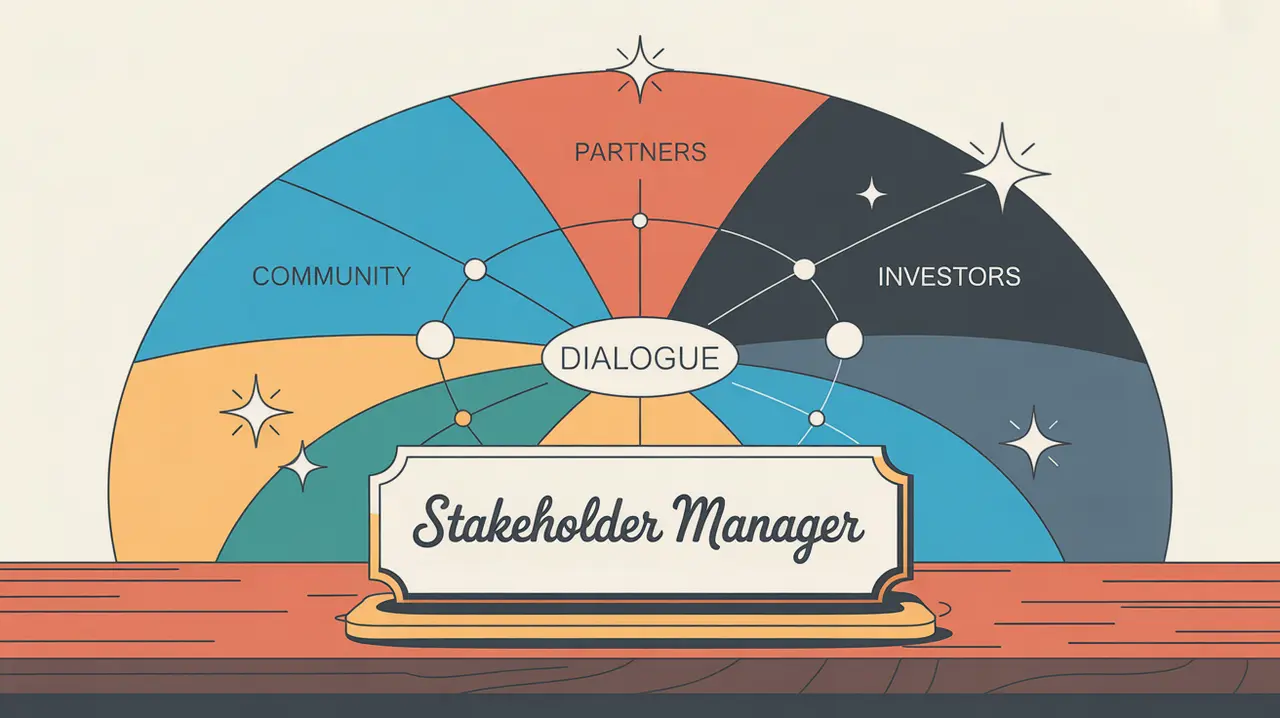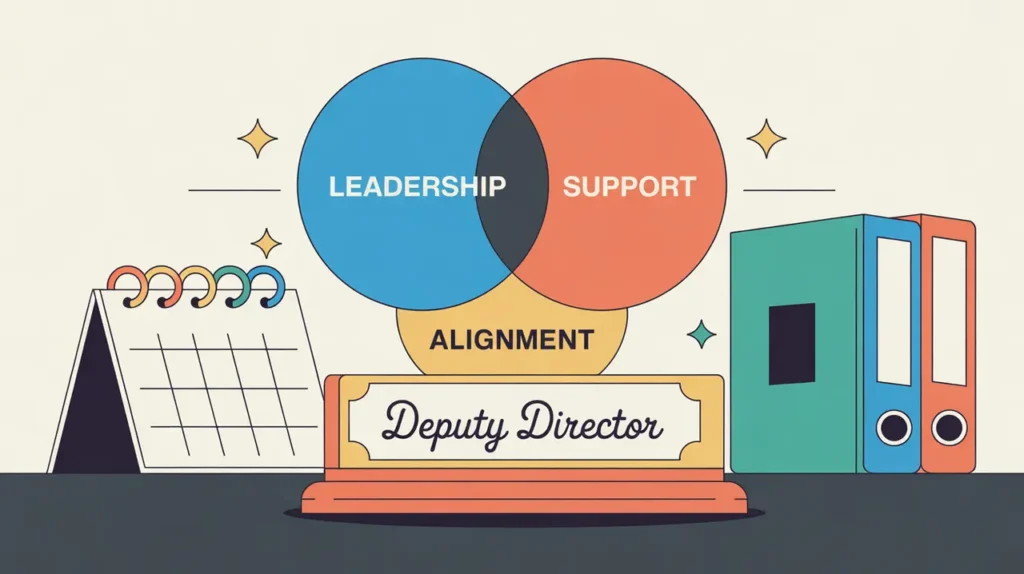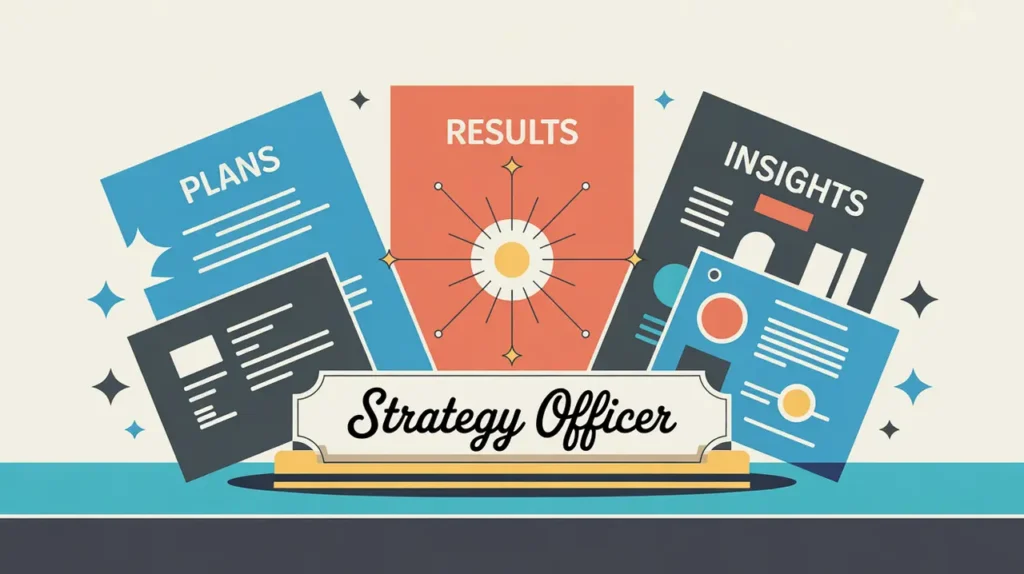What Does the Stakeholder Manager Role Involve?
A Stakeholder Manager is responsible for developing and maintaining strategic relationships with key external actors, including partners, donors, communities, governments, networks, and other organizations. They ensure that stakeholder engagement is intentional, coordinated, and aligned with the organization’s strategic goals. Their work involves mapping stakeholder landscapes, building trust-based relationships, managing communications, coordinating joint initiatives, and ensuring that partnerships deliver value for all parties involved.
In nonprofits and social enterprises, Stakeholder Managers play a critical role in shaping external perceptions, fostering collaboration, and positioning the organization effectively within its ecosystem.
At What Level does this Role Operate?
Mid to Senior Level: Stakeholder Managers typically report to a Director of External Relations, Director of Partnerships, or Executive Leadership. They operate with significant autonomy and strategic responsibility, often managing a portfolio of key relationships across different sectors or geographies. Depending on organizational size, they may supervise officers or assistants.
Relative Employability: Stakeholder Manager roles are common in medium to large nonprofits, international NGOs, foundations, and social enterprises with structured engagement, policy, or partnership functions. These roles are particularly valuable in organizations that depend on cross-sector collaboration, donor relations, or government partnerships.
Relative Pay Scale: Stakeholder Managers generally occupy the upper mid to senior pay bands, reflecting their strategic relationship management responsibilities. Their compensation often aligns with managerial roles in partnerships, fundraising, or external relations.
What are the Key Responsibilities and Activities?
- Develop and implement stakeholder engagement strategies aligned with organizational objectives
- Identify, map, and prioritize stakeholders based on influence, alignment, and strategic relevance
- Build and maintain relationships with key stakeholders, including funders, government agencies, community partners, and networks
- Serve as a primary point of contact for strategic stakeholders, ensuring regular communication and follow-up
- Coordinate cross-functional engagement efforts to ensure a unified organizational approach
- Manage stakeholder databases and CRM systems, ensuring accurate and current records
- Prepare briefing notes, presentations, and reports for leadership and boards on stakeholder engagement progress
- Identify opportunities for collaboration, joint initiatives, or strategic positioning within stakeholder networks
- Supervise and support stakeholder engagement staff, ensuring quality and consistency of interactions
What Core Competencies and Qualifications are Needed?
Required Qualifications and Experience
The following reflect common qualifications and experience expected for this role, while recognizing that pathways may vary by context, organization, and region.
- Relevant academic background in communications, international relations, public policy, business, or related fields
- Significant experience in stakeholder engagement, partnerships, external relations, or communications
- Demonstrated ability to manage complex relationships across sectors and levels of influence
- Familiarity with CRM systems, stakeholder mapping methodologies, and engagement frameworks
- Strong strategic thinking, communication, and negotiation skills
Key Competencies
- Strategic relationship management and diplomacy
- Excellent communication and interpersonal skills across diverse stakeholder groups
- Analytical and mapping skills for identifying opportunities and gaps in stakeholder ecosystems
- Strong organizational and coordination abilities to manage multiple relationships simultaneously
- Leadership and team management capabilities where applicable
- Cultural awareness and adaptability to different stakeholder contexts
How are AI and Automation Shaping this Role?
An AI-native Stakeholder Manager can use AI tools to map stakeholder networks, analyze engagement histories, and identify opportunities for strategic outreach. AI can support relationship tracking, automate routine communications, and generate insights from engagement data to inform strategy. Predictive analytics can also help identify emerging influencers, partners, or coalitions that align with organizational goals, enabling more targeted and proactive engagement.
What Career Pathways and Transferable Skills are Associated with this Role?
Stakeholder Managers can progress to roles such as Director of External Relations, Head of Partnerships, Policy Director, or Executive Leadership. Their strategic relationship management skills are transferable to senior roles in partnerships, advocacy, fundraising, and organizational strategy. Over time, they may lead large external affairs teams, shape institutional positioning strategies, or represent the organization in high-level coalitions and multi-sector collaborations.







